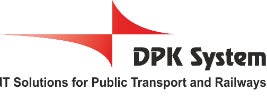The Line Designer application for Koleje Mazowieckie, the second largest passenger carrier in Poland, was implemented in 2018.
Koleje Mazowieckie employs more than 2,800 employees, including approximately 700 train drivers and 650 train managers, transporting more than 60 million passengers annually, running as many as 800 trains per day along 15 lines. 320 electric traction sets and a dozen or so traditional trains with locomotives are used to handle transport work.
For a carrier operating on such a scale, IT tools are necessary not only to improve the work of users, but above all to optimise the planning of transport at every stage, from tailor-made scheduling and rolling stock options to the optimisation of train circuits and train teams’ services. The optimal use of rolling stock and human resources enables supervision over operating costs and achieving the greatest possible passenger satisfaction at a reasonable cost.
The Line Designer programme is the tool selected for this purpose by Koleje Mazowieckie, and supplied and implemented by DPK System.
The task of the Line Designer application is to design train circuits in the most effective way, taking into account the conditions set by the user, limitations of the railway network and service requirements of the rolling stock. Conditions to be considered in planning include, among others, the time of passing at return stations, minimum and maximum duration of circuits, duration of service activities, and minimum number of trains in circulation.
The Line Designer software in the planning process enables indicating whether it is necessary to intertwine directions, whether trains must run along one line, whether trains can end and start running from different stations and whether a return to the beginning of the route is required.
What is more, the optimisation tool also enables tasking the so-called ‘soft’ conditions by multi-stage settings of parameters defining the user’s preferences as to the results obtained as a result of the optimisation of train circuits.
One of the main problems encountered while designing train circuits is the oddness at end stations. The occurrence of such a situation most often causes the need for determining technical journeys that allow to move the given vehicle from one location to another, but at the same time generate costs related to handling the given journey, at the same time reducing the time of train composition availability. Therefore, one of the basic tasks of the optimisation algorithm used in the application is to minimise the number and distances of technical journeys.
The Line Designer programme has a built-in pre and post-processing tool that significantly speeds up the operation of the optimisation module and increases the user’s supervision over the operation of the software. The operation of the optimisation module is managed by optimisation scenarios, which, constructed by the user, adjust the order and weight of the next steps to the individual enterprise conditions, the railway network and the expected results.
Before the optimisation scenario is completed, the program analyses the resulting timetable data and informs the user about odd-numbered cases, which is a hint for the user, where running a commercial drive instead of a technical one is worthwhile. The system also enables analysing potential minor shifts of transport tasks in time, not always possible to be introduced, but where they are possible, allowing for a much better use of rolling stock.
Planning train routing is one of the key issues in optimising the transport process in order to achieve satisfactory performance indicators for the use of rolling stock.
In the case of such a company as Koleje Mazowieckie, optimising circuits with the help of our software brings about efficiency improvements at the level of approximately 1%, which translates in practice into saving three train compositions that can constitute a rolling stock or carry out other transport works. The DPK System is working on improving optimisation algorithms, which is intended to increase savings by a minimum of 1% more.
At present, implementation works related to the launch of tools for the construction and optimisation of tasks for train teams based on train circuits are underway in Koleje Mazowieckie.

